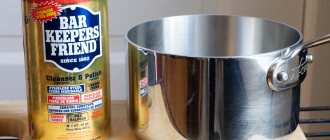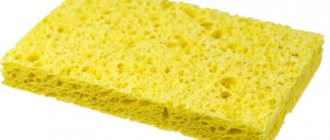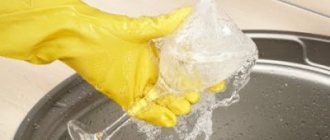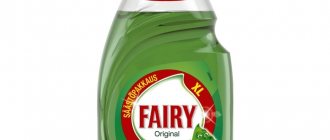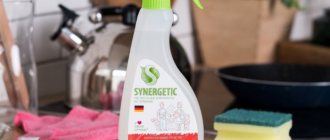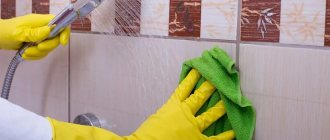You can safely take plastic dishes with you on the road, put food in plastic containers for a snack at work, or put food supplies in the refrigerator. Plastic is a very practical material, and when used correctly, it is also durable. How to wash it correctly, and most importantly, what to do with plastic dishes at home so that they look like new for as long as possible?
How to get rid of melted plastic?
How to Remove Melted Plastic from a Stove
- Step 1: Allow your stove to cool completely.
- Step 2: Sprinkle baking soda on the melted plastic.
- Step 3: Sprinkle generously with white vinegar.
- Step 4: Let the mixture bubble for about 30 seconds.
- Step 5: Use a sponge to remove any pieces of melted plastic.
20 Dec
2022 Interesting materials:
What is needed to create a local network? What is needed to create a consumer cooperative? What does it take to create a trade union? What do you need to go to Germany for a visit? What does it take to have a good memory? What does it take to gain muscle mass? What is needed to transport a puppy across the border? What do you need to go to Helsinki? What do you need to send a parcel? What does it take to become a TV presenter?
How to wash old plastic dishes
If plastic dishes have become very old and have lost their attractive appearance, they can still be revived. Simple homemade recipes will help.
Bleach
Bleach will help whiten a long-yellowed old plastic food container. You can use absolutely any fabric bleach.
You need to mix one part bleach and two parts water, pour this solution into the dishes and leave for 30 minutes. After bleaching, the food container must be rinsed very thoroughly in plenty of running water.
Hydrogen peroxide
You can try removing yellow stains and old dirt stains from plastic using hydrogen peroxide. This cheap medicine does a good job of bleaching fabrics and removing stains. It will also help in the case of an old plastic container.
You just need to fill a large saucepan with warm water and add a bottle of peroxide, immerse the dirty dishes in the solution and leave for an hour. The plastic will bleach, and all that remains is to rinse the dishes.
Denture cleaning tablets
Denture cleansers are sold in pharmacies and are great for removing yellow stains and old stains from plastic containers.
It is necessary to dissolve several tablets in a large container in hot water, and then immerse dirty plastic dishes in the solution and leave overnight. This method helps not only to restore a new look to the plastic, but also to remove the unpleasant odor that usually comes from old plastic dishes.
Why does plastic turn yellow?
There are several reasons why plastic turns yellow. The most basic:
- exposure to sunlight (ultraviolet radiation leads to partial disintegration of the plastic surface);
- temperature changes;
- additives that make up plastic.
This is why window sills on plastic windows, the surfaces of refrigerators and microwave ovens turn yellow.
It is impossible to guess how quickly the yellowness will appear on the plastic. Because it depends not only on the three factors above, but also on the handling of the plastic.
How to clean water deposits from plastic?
Vinegar diluted with water will do a great job of removing plaque. It is diluted in proportions of 1:3, with more water accordingly. Wet the contaminated surface or spray it, leave it for a while, then walk over the surface with a washcloth and rinse with plenty of water. Ammonia and lemon juice are alternatives to vinegar.
Interesting materials:
Why does Twitch stream lag? Why Lenin? Why do the leaves dry up on women's happiness? Why are any two vectors coplanar? Why is Lord Voldemort without a nose? Why is it better to cry? Why does the bow go into the arrow? What should I do? Why is the Moon turned to the Earth on one side and the other is never visible? Why Lviv Lemberg? Why is McBreakfast until 10?
Yellow spots on plastic
Windows, which are popular nowadays and made of such durable and easy-to-clean material, unfortunately, quickly lose their color. The reason for this is:
- ultraviolet influence of direct sunlight, which affects the material at the molecular level;
- temperature fluctuations due to weather or radiator operation;
- various impurities that react unpredictably to cleaning products.
The following will help to return the white color: hydrogen peroxide, a solution with bleach, car cosmetics, wipes for the care of computer equipment and other products described in the article.
Causes of yellowing of plastic surfaces
Plastic polymers are resistant to moisture and are not affected by alkalis/acids, which is why they have gained popularity and are used by many industries. However, over time, white wall coverings, window sills and other plastic elements turn yellow. This is caused by the influence of organic solvents and direct exposure to the sun's rays.
Note! When you see plastic modifications at home (even minor ones), start restoration, because the sooner you take action, the easier the process will be.
Cleaning a plastic kettle from scale and dirt
To clean a plastic kettle from scale and a layer of dirt, use 9% vinegar (1 tablespoon per 1 liter of water), citric acid (1 teaspoon per 1 liter of water), potato or apple peelings (a couple of medium potatoes or small apples is enough for 1 liter of water).
Cleaning and washing of plastic products: dishes, teapots, barrels, etc.
Method: pour water into the kettle, add the “active” agent, bring to a boil, and then let it brew for 30-60 minutes. Pour out the mixture, go over the inside of the kettle with a clean soft sponge and rinse the dishes well with cold water.
It is not recommended to use vinegar more than once every six months. Even though it is a “mild” acid, it will eat away at fragile plastics over time.
Chemicals for cleaning PVC
To wash plastic window sills and profiles from yellowness, removing stubborn stains, use cleaning products without abrasive components.
Use chemical compounds in accordance with the instructions!
Popular household chemicals:
- Domestos - apply the liquid to the dirt and wipe the surface with a clean cloth after 15 minutes.
- Cif – copes with stains from flower pots, coffee, tea. Use the product in gel form.
- Cillit Bang is a powerful tool that allows you not only to whiten plastic, but also to remove particles of polyurethane foam or plaster. Apply the substance to the stain and after 5–10 minutes, remove the remaining building material with a damp cloth.
- Cosmofen is a special composition for cleaning plastic windows with the addition of a solvent that breaks down particles of dirt and grease. Use the product on dry surfaces. For deep contamination, repeat the procedure.
High-quality cleaners carefully clean and disinfect plastic surfaces. Thanks to the formation of a protective film on plastic, they prevent the appearance of yellowness, protect the material from corrosion and structural damage (deformation, stains, peeling of paint).
Cleaning other plastic products and furniture
Plastic combs require not only constant cleaning, but also disinfection. Citric acid, ammonia or 9% table vinegar can handle these tasks quite well.
Prepare a soap solution, add 1 tbsp. spoon of product (per 1 liter). Soak the comb for an hour and then wash with plain water. A weak solution of potassium permanganate will also destroy bacteria: keep the comb in it for an hour.
To wash plastic products such as children's toys (cubes, cars), soak them in a solution of laundry soap. Use a preliminary soak (for half an hour) and an old toothbrush - dirt in small recesses and joints will disappear without a trace. Once the procedure is completed, rinse the toys under running water and leave to dry naturally.
Plastic furniture can be cleaned in a similar way. Just instead of soaking, thoroughly wipe the contaminated surface with a sponge soaked in a soapy solution, then rinse with water and dry with a clean rag.
More about cleaning plastic at ChistoDar.
How to wash a plastic barrel (tank or canister) from dirt and mold
Washing a plastic drinking canister or tank is a labor-intensive task, but among home remedies there are “helpers” that can cope with even such a difficult task. All methods combine the action of cleaning agents, disinfectants and mechanical cleaning.
Technology: pour one of the products suggested below into a tank or barrel, close the lid and shake well (twist or roll). The smallest particles will polish the container from the inside, and the active substances will destroy accumulated bacteria.
To make the process more efficient, fill the barrel not completely, but about a quarter. After cleaning, do not forget to rinse the container with cool water and dry naturally.
Cleaners:
- Baking soda is a mild abrasive that also effectively fights microorganisms. For 1 liter of water, 2 teaspoons of powder is enough.
- As an alternative to soda, use clean (calcined) sand, sawdust, coffee grounds, millet (at the rate of 200-300 grams per 10 liters of water). For added effect, add a few drops of dishwashing liquid.
- A saturated (bright pink) solution of potassium permanganate not only disinfects the surface, but also removes the pronounced “swampy” smell.
Tanks, barrels, and canisters must be cleaned of accumulated dirt, sediment and mold (green) at least once every 2-3 months.
Dentifrice
Clean the plastic without damaging it using toothpaste and crushed chalk. Step-by-step actions:
- mix the components in a ratio of 1/1;
- dissolve with water until mushy;
- spread the paste over contaminated areas;
- After the layer has hardened, remove the product with a dry cloth.
For “old” stains, perform the operation several times.
Do regular cleaning of plastic windows once a month.
To do this, use dishwashing gel. Apply a few drops of detergent to a damp cloth and wipe the window sill. After 10 minutes, clean the plastic with a dry towel. Spray WD-40 Aerosol over the surface to maintain the elasticity of the sealing elements.
Laundry soap
This product will help renew the color of the plastic and remove stubborn stains:
- chop half the block on a grater;
- pour boiling water over the mixture and leave until the soap is completely dissolved;
- apply the paste to the contaminated surface and leave the product for 30 minutes;
- Use a soft sponge to remove any remaining compound.
Such actions will allow you to remove yellow stains, dark spots and greasy deposits from PVC. Watch the video instructions on how to clean windows from yellowing with laundry soap.
Removing unpleasant odors from plastic dishes
Plastic dishes often begin to smell unpleasant. You can remove the pungent odor using simple products that can be found in every home.
You can simply wipe the surface of the dishes with a cloth soaked in pure vinegar or lemon juice. Many housewives, after washing a food container, put a slice of lemon in it for several hours to remove the smell of food from the container.
Ground coffee is also a great way to deal with unpleasant odors from plastic dishes. You just need to put a few grains in a container and leave it closed for several hours.
A product that absorbs odors well is activated carbon. You just need to grind a few tablets into a fine powder, and then pour it into a plastic container and close it tightly. After a few hours, the dishes will need to be rinsed and dried.
And finally, if you crumple up regular newspaper, put it in a plastic container and leave it for several hours, the unpleasant smell from the dishes will go away.
When washing dishes for food, you should not use aggressive chemicals, which not only harm your health, but are also quite expensive. Simple, affordable, and most importantly harmless products will help you maintain perfect order in your kitchen.

